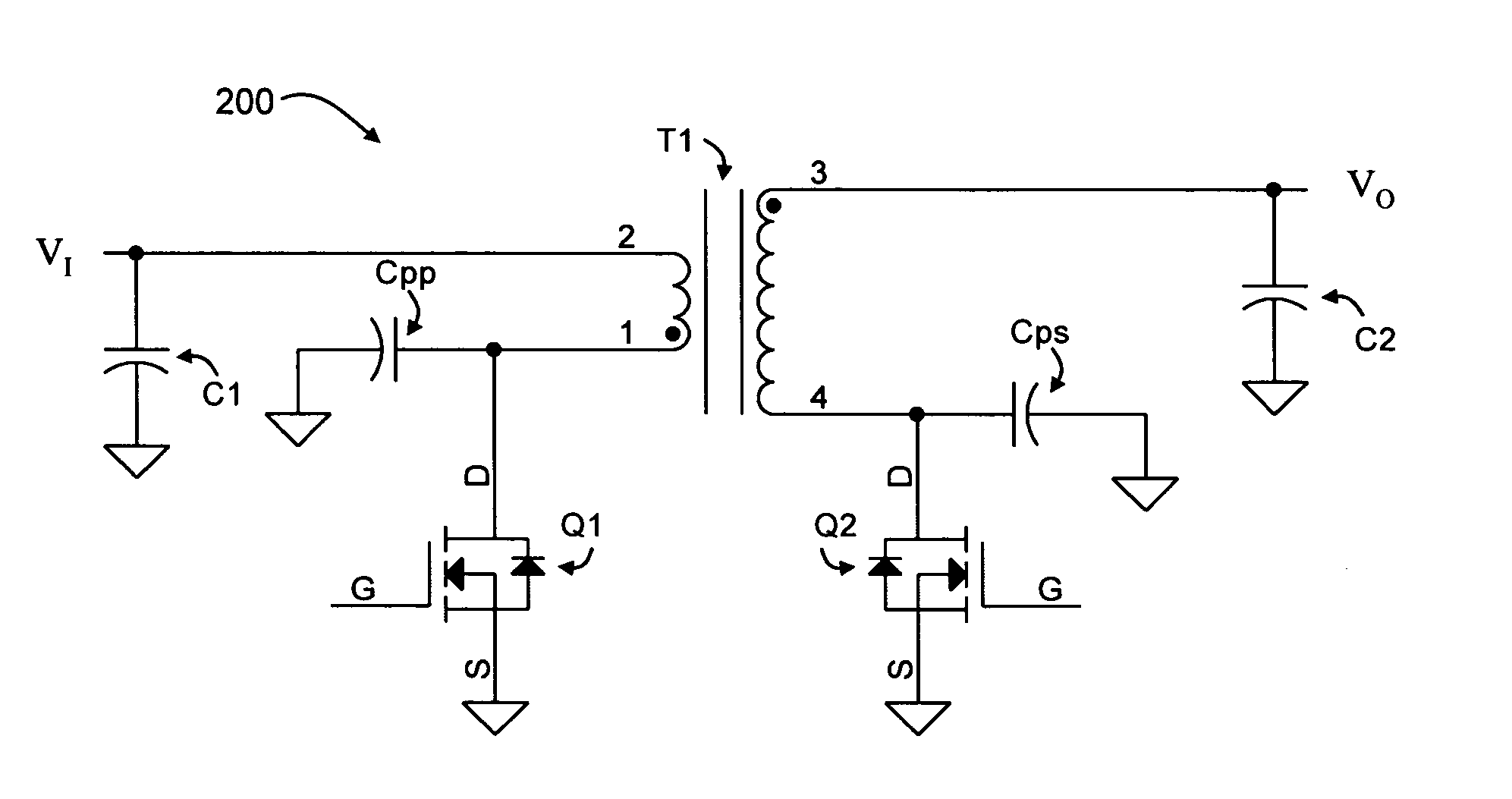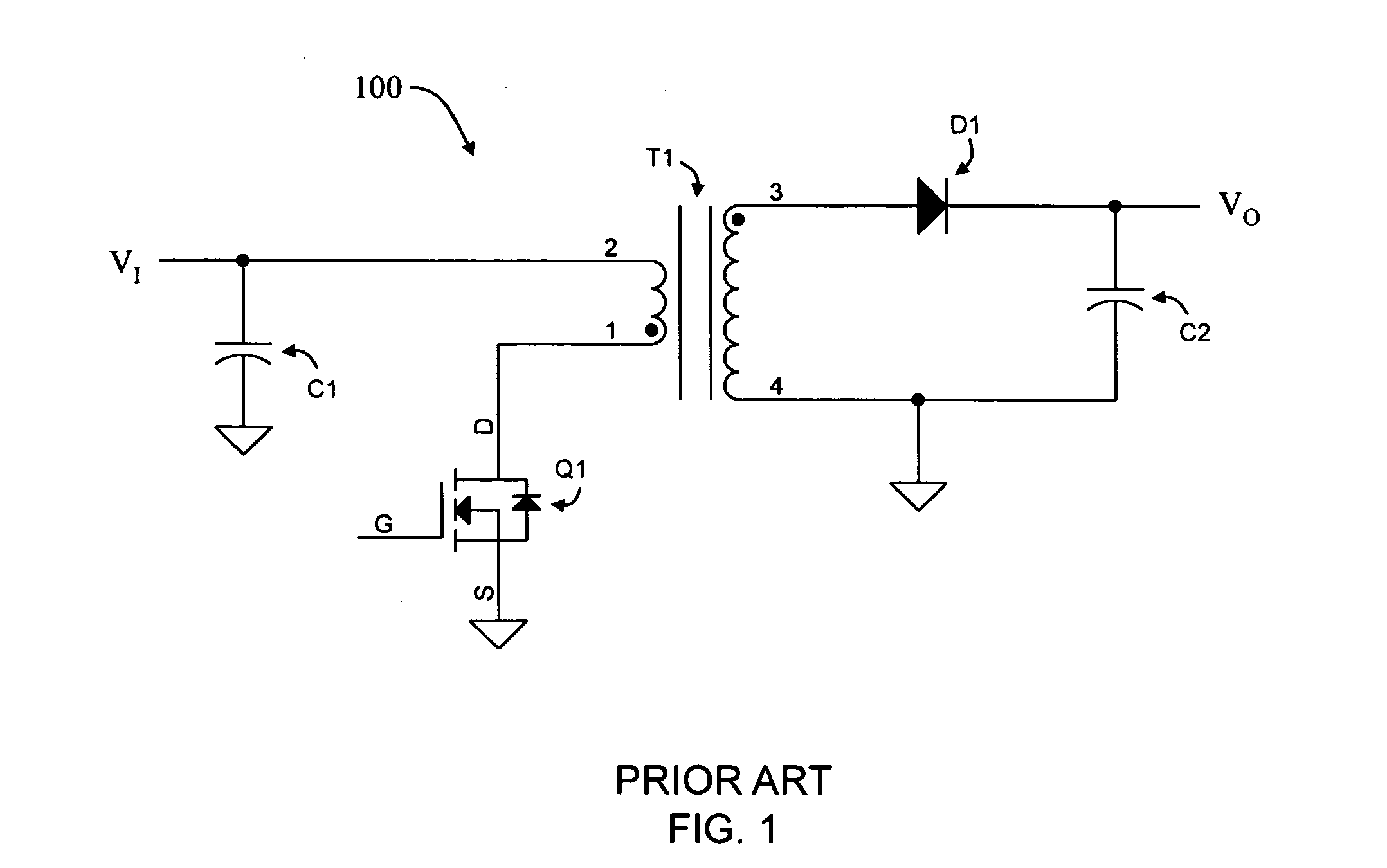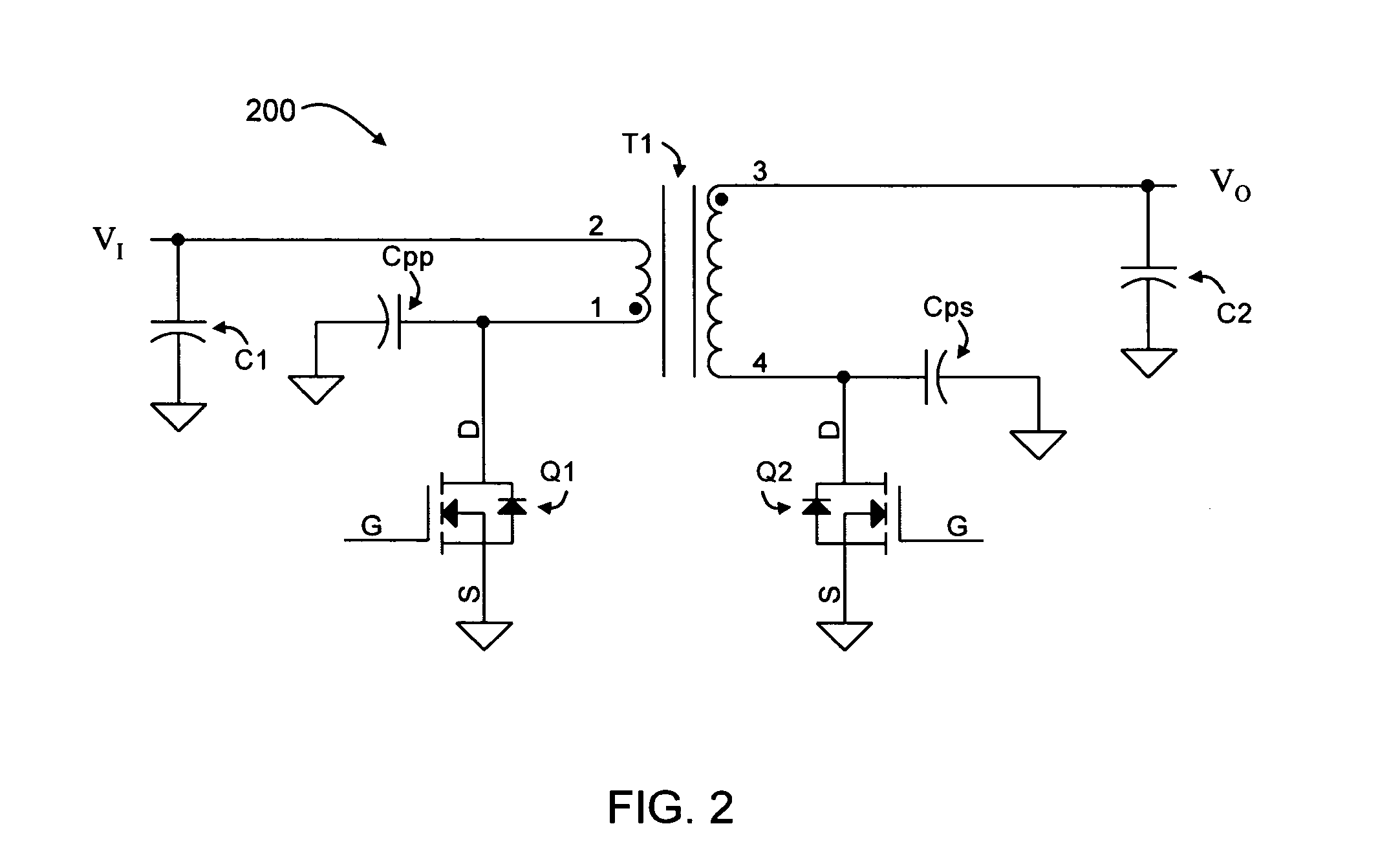Power circuitry for high-frequency applications
- Summary
- Abstract
- Description
- Claims
- Application Information
AI Technical Summary
Benefits of technology
Problems solved by technology
Method used
Image
Examples
example
[0098] An exemplary application of the power circuit of FIG. 2 involves charging a 1 nF capacitor (C2) to 2000 V (VO) in 2.5 msec, with a 10 V input supply (VI). Using Cpp and Cps capacitors having values of 500 pF and 50 pF, respectively, and a selected switching frequency of 25 kHz. The flyback transformer (T1) may have an inductance (as measured from the primary side) of 82 uH, and a primary-to-secondary turns ratio of 1:50. Capacitor C1 may have a value of 190 uF or greater. The peak voltage across transistor Q1 is about 50V, while the worst-case peak current in transistor Q1 during the charging cycle is about 3.9 A, and the minimum current in transistor Q1 is about 25 mA. The peak voltage across transistor Q2 is about 2500 V, while the maximum and minimum currents in transistor Q2 is about 500 nA to about −78 mA, respectively.
[0099] Methods associated with the subject power and control circuits are contemplated in which those methods are carried out with high-frequency devices...
PUM
 Login to View More
Login to View More Abstract
Description
Claims
Application Information
 Login to View More
Login to View More - R&D
- Intellectual Property
- Life Sciences
- Materials
- Tech Scout
- Unparalleled Data Quality
- Higher Quality Content
- 60% Fewer Hallucinations
Browse by: Latest US Patents, China's latest patents, Technical Efficacy Thesaurus, Application Domain, Technology Topic, Popular Technical Reports.
© 2025 PatSnap. All rights reserved.Legal|Privacy policy|Modern Slavery Act Transparency Statement|Sitemap|About US| Contact US: help@patsnap.com



